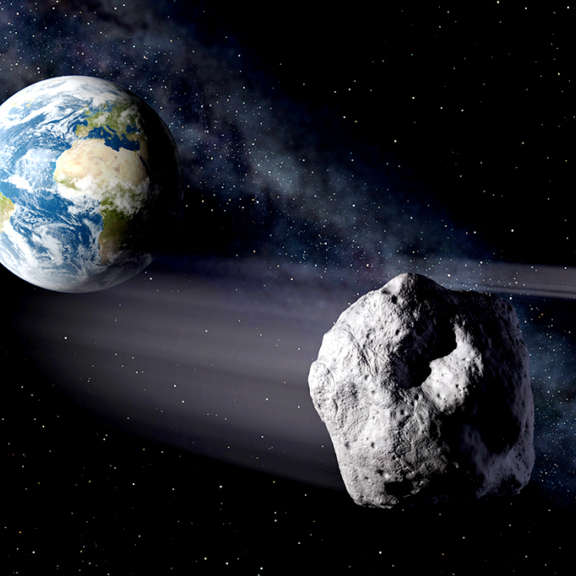Laser Bees: A Way to Deflect Dangerous Asteroids
At a Glance
- Laser Bees was a project to validate the concept of laser ablation as a means to deflect threatening asteroids from Earth impact.
- The Planetary Society and its members helped fund original research to test this technique in the laboratory.
- The team demonstrated that laser ablation is a promising deflection capability, and significantly improved theoretical models to assist future work.
Should a near-Earth object (NEOs) ever threaten to hit the Earth, there may be a chance to alter its trajectory and avoid an impact. This is known as deflection.
This is harder than it sounds. There are many ways in which humanity could hypothetically deflect an asteroid. You can hit it with something to change its velocity. You could park a very large mass next to an asteroid and create a "gravity tug" to pull it off course. Or you could detonate a nuclear device. Each method has advantages and disadvantages—as of yet, there is no agreed-upon "best" deflection technique.
Unfortunately, due to the low probability of NEO impacts, national governments have provided very little research funding to study this problem in detail. The Planetary Society helps fill in this gap, funding projects to further our understanding of novel deflection techniques that, one day, may help save the world.
Beginning in 2010, The Planetary Society began a project to study the deflection technique known as laser ablation. Focusing a laser onto the surface of a NEO transforms some of its surface material directly from a solid to a gas. This gas forms into a plume of ejecta that is then expelled from the surface, acting against the asteroid, inducing a small, yet continuous thrust. Over time, this small thrust can significantly change the trajectory of an asteroid.
A swarm of small spacecraft each carrying a small laser (hence the name, Laser Bees) could be sent to a threatening NEO, zap its surface, and ultimately prevent it from impacting the Earth.
The process has several advantages over other deflection techniques:
- It does not depend on the material composition of the NEO—it can be a rubble pile or solid chunk of iron. It works the same for both.
- It uses swarms of the same small spacecraft, and thus provides high redundancy.
- It can scale with the size of the asteroid—bigger asteroids require more spacecraft, smaller asteroids, fewer.

The Planetary Society supported a small team at the University of Strathclyde and the University of Glasgow in Scotland to perform laboratory studies to refine and validate our understanding of this technique. With the support of our members, we
funded equipment, supplies, and a graduate student dedicated to working
on the experiments.


Research results
Laser ablation was shown to be, theoretically, a promising technique. The work resulted in significant improvements to theoretical models and suggests promising avenues for future work. Including more detailed and inclusive ablation experiments to directly measure the mass flow rate and temperature of the ejecta plume, the resultant thrust vector, and the reduction of laser energy during the potential lifetime of the mission.
Defend Earth
How The Planetary Society works to decrease the risk of Earth being hit by an asteroid or comet.


 Explore Worlds
Explore Worlds Find Life
Find Life Defend Earth
Defend Earth


